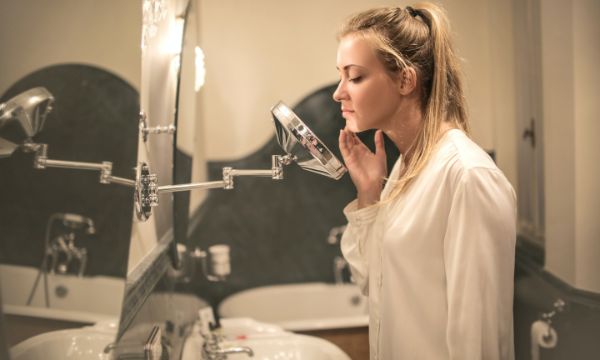
Your Guide To Sebaceous Filaments
Have you ever stopped to think whether the blackheads on your nose are actually sebaceous filaments? This may well be the case, especially if they keep coming back after you’ve tried everything to get rid of them – sometimes even the next day…
It can be frustrating, particularly when you’re doing a great job of keeping breakouts at bay by maintaining a proper skincare routine. It almost feels like a losing battle, when the only way standing in the way of achieving that healthy, glowing complexion is those tiny dark spots. Here’s the thing though: they might look like blackheads, but actually aren’t. Keep scrolling to learn more about what are sebaceous filaments and more importantly, how to get rid of them.
What Are Sebaceous Filaments
You may have heard of sebaceous glands, which are responsible for producing sebum to retain moisture and protect your skin. When pores fill up with sebum, they become sebaceous filaments (or sebum plugs). They have a tube-like structure to guide the sebum on the external surface of your skin to keep it hydrated and act as a barrier from harmful matter such as bacterial and fungal infections.
The thing with sebaceous filaments is that every single person on the planet has them, although they’re not always visible. It’s only when sebaceous glands double down on sebum production and the oil gets oxidized (i.e. turn black or grey), making them visible to a naked eye and often confused with blackheads.
How To Get Rid Of Sebaceous Filaments
Unfortunately, we have bad news: since sebaceous filaments play such an integral role in nourishing your skin, you can’t technically get rid of them – but you can certainly minimize their appearance. You probably already know this yourself, but squeezing them and extracting the excess sebum isn’t going to do the trick. In fact, it’ll most likely lead to scarring and enlarging your pores!
Here’s what to do instead:
1. Cleanse
You can never go wrong with gentle and regular cleansing to prevent buildup in your pores. And although the general cleansing rule for oily skin prone to breakouts is to avoid oil-based products, you may want to revisit the idea of double-cleansing – first, use the oil cleanser to really draw out the congestion, followed by a water-based product for a deeper clean.
2. Exfoliate
Aside from regular cleansing, exfoliation is a must to prevent the buildup and dead skin cells from clogging your pores. For a boost from inside out though, consider using chemical exfoliators with BHAs (that contain glycolic, lactic, and salicylic acids) as they’ll actually start working toward breaking down the buildup, aside from keeping your pores clean.
3. Use retinoids
Since retinol and retinoid products are extremely effective at regulating the sebaceous glands, they’re a powerful weapon against sebaceous filaments and blackheads. However, if you’ve never used retinoids on your skin, consider starting small with over-the-counter products to avoid irritation and drying out your skin.












